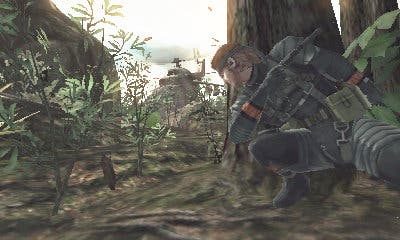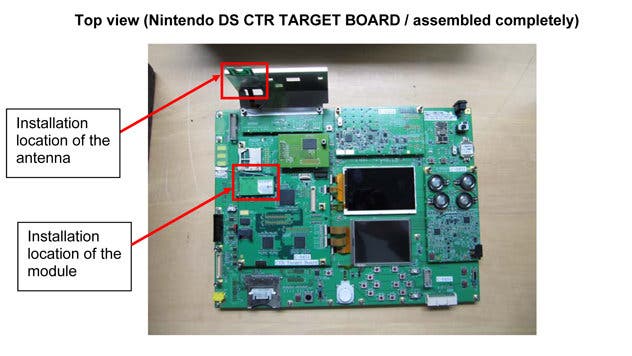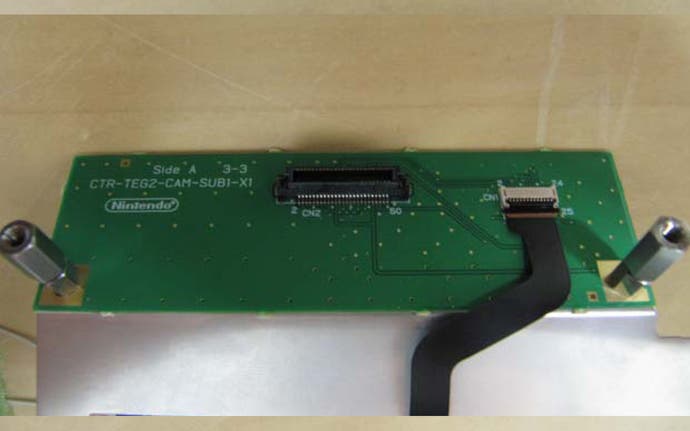Nintendo 3DS tech spec exploration
Whatever happened to the NVIDIA "DS2"?
Last night's leak of the Nintendo 3DS tech spec reveals a lean, power efficient device assembled from a relatively mediocre set of components. Once again, the platform holder has used a selection of established, cheap, off-the-shelf chips and made it feel fresh and new thanks to the implementation of a game-changing concept: in this case, glasses-free stereo 3D.
According to IGN's anonymous source, 3DS is powered by twin ARM11 CPUs clocked at a relatively meagre 266MHz, while overall system storage (sans SD card) is 1.5GB. Onboard RAM is 64MB, with 4MB of video memory. DMP's PICA-200 graphics chip is said to be running at a relatively lightweight 133MHz.
First things first, let's address the plausibility of the source. IGN has a reputation for outing notoriously secretive Nintendo specs and in its previous stories on DS and Wii, history has proven them to be entirely correct. With a track record like that, it would be unwise to bet against the veracity of this story assuming it comes from the same source. More than that, there are other elements to the spec which clearly corroborate with other little-known, recently unearthed facts about the system - and we'll get to that a bit later. In short, the story appears eminently credible.
Assessing the hardware set-up, it's obvious that the assembled components represent a massive step-up from the existing DSi, while measuring up badly against the latest in smartphone technology. The 64MB of RAM is particularly disappointing, bearing in mind that the PSP has shipped with the exact same amount of memory since the launch of the PSP-2000 (the first "slim" model). On the plus side, there is no smartphone OS required to tax RAM resources, but regardless, it's still a surprisingly low amount.
The 4MB of video RAM may seem particularly appalling (and is equal to the amount found in PlayStation 2), but bearing in mind that the 3DS only has to deal with an 800x240 framebuffer it shouldn't cause undue concern. What the RAM would actually be used for is also a prime concern - is that 4MB for textures only, or is it akin to the 10MB of eDRAM attached to the Xbox 360 graphics chip? The original story is, alas, short of details.


The ARM11 architecture is rather long in the tooth now, with noted tech site AnandTech likening it to a very highly clocked 486-level CPU, while the new A8 Cortex is more akin to a Pentium. The original iPhone ran a single ARM11 core at 412MHz, so overall CPU capability is probably very similar indeed to the 3DS - the difference being that the full power of the twin cores can be deployed on games without the meaty iOS overhead that the iPhone needs to maintain while running any application.
Nintendo's decision to run the PICA-200 GPU at a mere 133MHz is again surprisingly low. The chip itself can run at up to 400MHz, but the vendor itself quotes specs at 200MHz. Here, PICA-200 maxes out at 800 million pixels per second and 15.3 million polygons per second – so we can most likely expect 66 per cent of that general performance on Nintendo's down-clocked version of the chip.
Despite the lowered clock speed, the chip loses none of its bespoke technology: DMP says that PICA-200 supports per-pixel lighting, procedural textures, refraction mapping and self-shadowing - in the absence of programmable pixel shaders, it's exactly the sort of thing that makes graphically impressive 3DS titles like Resident Evil look as good as they do.
This just leaves the rather curious 1.5GB of on-board flash RAM, and this can be effectively confirmed by analysis of the 3DS development hardware we've seen so far - lending further credibility to IGN's specs.
Regular readers of Digital Foundry will probably recall our story on the Nintendo CTR Target Board - basically this is the development kit for the 3DS, and Nintendo submitted it to the FCC for testing its WiFi component. Recent images of an older CTR Target Board have recently been unearthed by Daniele Brigliadori of Nintendo3DSItalia, who painstakingly searched FCC filings for any use of the Mitsumi antenna used in all the Nintendo DS handhelds thus far.

Close-ups of the board in the FCC filing clearly show that the development kit possesses a 2GB moviNAND flash chip supplied by Samsung. This suggests that Nintendo is making 1.5GB of that RAM available to the user, while reserving an impressive 25 per cent for the operating system. Reserving a mammoth 512MB suggests that Nintendo has serious plans for the functionality of the unit over and above what we have seen so far.
The board is also fascinating as a piece of evidence in the history of the 3DS's development. Last year, rumours circulated that Nintendo was using NVIDIA's Tegra hardware for its upcoming DS replacement. There were even rumours of a sighting at gamescom 2009, behind closed doors.
In November, Digital Foundry upped the ante still further by revealing that the Tegra 2 system-on-chip (SoC) would be powering the "DS2", most likely in a custom flavour designed by Nintendo. Flash forward to June 2009 and suddenly NVIDIA was out of the picture. Bearing in mind that we typically double-source before publishing a rumour (and in this case, the NVIDIA connection was actually triple-sourced), NVIDIA being dumped was a bit of a surprise. Were all of our sources wrong?


The newly discovered FCC filing, dated to December 2009, clearly shows an older version of the Target Board, dubbed CTR-TEG2: firm evidence that Nintendo was indeed closely involved with NVIDIA and that Tegra IP was still being used until relatively recently.
It's clearly still a 3DS - there's the exact same arrangement of widescreen and 4:3 screens, though there are a number of changes, not least of which is just a single external camera, suggesting that the full stereoscopic 3D capabilities of the unit were still being worked on, or remained a closely guarded secret within Nintendo itself at that point in time.
Quite why Nintendo decided to switch suppliers and go with DMP remains something of a mystery, especially bearing in mind just how much more modern and capable the Tegra IP is compared to the much older PICA-200. Perhaps it was a cost issue, perhaps it was a power consumption issue: Nintendo likes cheap parts and lots of battery life. Maybe, similar to the Dreamcast, there were two competing designs using graphical IP from different suppliers.
Bearing in mind how secretive Nintendo is about its technology and its relationships with external IP vendors, the chances are it'll be years until we find out what actually happened...

